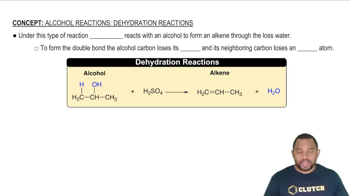Here are the essential concepts you must grasp in order to answer the question correctly.
Gibbs Free Energy (∆Gr°)
Gibbs Free Energy (∆Gr°) is a thermodynamic potential that measures the maximum reversible work obtainable from a thermodynamic process at constant temperature and pressure. It indicates the spontaneity of a reaction; a negative ∆Gr° suggests that the reaction can occur spontaneously, while a positive value indicates non-spontaneity. The standard Gibbs free energy change can be calculated using standard enthalpy and entropy values.
Recommended video:
Gibbs Free Energy of Reactions
Equilibrium Constant (K)
The equilibrium constant (K) is a dimensionless number that expresses the ratio of the concentrations of products to reactants at equilibrium for a given reaction at a specific temperature. It provides insight into the extent of a reaction; a large K value indicates that products are favored, while a small K suggests that reactants are favored. The relationship between K and Gibbs free energy change is given by the equation ∆Gr° = -RT ln(K).
Recommended video:
Disproportionation Reaction
A disproportionation reaction is a specific type of redox reaction in which a single substance is simultaneously oxidized and reduced, resulting in two different products. In the case of Mn2+(aq), it is transformed into elemental manganese (Mn) and manganese dioxide (MnO2) under acidic conditions. Understanding the half-reactions involved is crucial for calculating the overall Gibbs free energy change and equilibrium constant for the reaction.
Recommended video:
Alcohol Reactions: Dehydration Reactions




